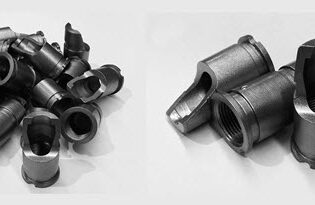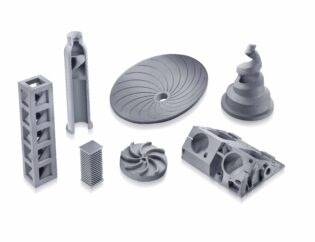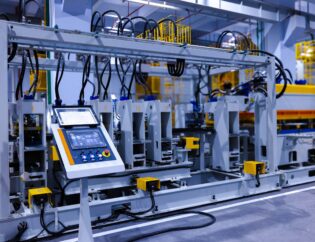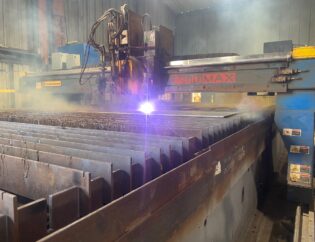In the world of automotive engineering, understanding CNC engine parts is crucial for both enthusiasts and professionals. CNC, or Computer Numerical Control, revolutionizes the manufacturing of engine components, ensuring precision and consistency. This guide delves into the intricacies of CNC engine parts, highlighting their significance in performance and reliability.
Readers can expect to explore various CNC engine components, their functions, and the benefits of using CNC technology in production. From cylinder heads to crankshafts, each part plays a vital role in engine efficiency. By the end of this guide, you will have a comprehensive understanding of how these parts contribute to overall engine performance and longevity.
Whether you are a seasoned mechanic or a curious beginner, this guide will equip you with the knowledge to make informed decisions about CNC engine parts. Join us as we uncover the essential elements that drive modern engines and enhance your automotive expertise.
A Complete Guide to CNC Machined Engine Components
Engine parts are machined through CNC-machining to improve both their reliability and vehicle performance. CNC-machining offers tight tolerances which help produce engine parts with greater adaptability in design and faster production rates. This guide will delve into the various aspects of CNC machined engine components, including technical features, types of machining processes, and their benefits and challenges.
Technical Features of CNC Machining
CNC machining is a sophisticated process that utilizes computer-controlled machines to create precise components. Below is a comparison table highlighting the key technical features of CNC machining:
| Feature | Description |
|---|---|
| Precision | Achieves tolerances as tight as ±0.0025 mm, ensuring high-quality components. |
| Automation | Reduces human error and increases production efficiency through automated processes. |
| Material Versatility | Capable of machining various materials, including metals, plastics, and composites. |
| Complex Geometries | Allows for the creation of intricate designs that are difficult to achieve with traditional methods. |
| Repeatability | Ensures consistent quality across multiple parts, essential for mass production. |
| Speed | Faster production rates compared to manual machining, reducing lead times. |
| Customization | Easily adaptable to different designs and specifications, enhancing flexibility. |
Types of CNC Machining Processes
CNC machining encompasses several processes, each suited for specific applications in engine component manufacturing. The following table outlines the different types of CNC machining processes:
| Type | Description |
|---|---|
| Milling | Uses rotating cutting tools to remove material, ideal for creating complex shapes. |
| Turning | Involves rotating the workpiece against a stationary tool, perfect for cylindrical parts. |
| Drilling | Creates precise holes in components, essential for oil galleries and coolant passages. |
| Boring | Enlarges existing holes with high precision, crucial for fitting bearings and pistons. |
| Grinding | Finishing process that achieves ultra-precise surface finishes on critical components. |
| Honing | Refines cylinder bores for better oil retention and reduced friction. |
| Lapping | Achieves ultra-fine finishes on surfaces, enhancing sealing and performance. |
| EDM | Uses electrical discharges to shape complex parts, ideal for hard metals. |
Advantages of CNC Machining
CNC machining offers numerous advantages that make it a preferred choice for manufacturing engine components. These include:
- Consistency: CNC machining ensures uniform quality across all parts, which is vital for components that must work together seamlessly.
- Cost Efficiency: Reduces long-term costs through lower labor expenses and minimal material waste.
- Speed: Automation allows for faster production, significantly decreasing lead times.
- Complex Designs: Capable of producing intricate geometries that are essential for modern engine designs.
- High Precision: Guarantees tight tolerances, enhancing the performance and durability of critical engine parts.
Challenges of CNC Machining
Despite its advantages, CNC machining also presents certain challenges:
- Initial Investment: Requires significant upfront costs for equipment and software, which can be a barrier for small manufacturers.
- Technical Skill Requirement: Operators need advanced programming skills and familiarity with CAD/CAM software.
- Tool Wear: Regular maintenance and monitoring are necessary to maintain performance and accuracy.
- Workpiece Positioning: Proper clamping and fixturing are crucial to prevent distortion and misalignment during machining.
Conclusion
CNC machining has revolutionized the manufacturing of engine components, providing unmatched precision, efficiency, and adaptability. While challenges such as initial costs and technical skill requirements exist, the benefits far outweigh them. Companies like CNC Motorsports, Rottler Manufacturing, and KDM Fabrication leverage CNC technology to produce high-performance engine parts that meet the demands of modern automotive engineering.
FAQs
1. What is CNC machining?
CNC machining is a subtractive manufacturing process that uses programmed instructions to control machine tools, creating precise and complex parts from various materials.
2. How does CNC machining ensure consistency in mass production?
CNC machining achieves consistent dimensions and performance through automation and strict quality control measures, ensuring repeatability in large-scale production.
3. What materials are commonly used for CNC machined engine parts?
Common materials include stainless steel, titanium, high-strength steels, and aluminum alloys, which are selected based on the specific requirements of the engine components.
4. What are the main advantages of CNC machining over traditional methods?
CNC machining offers higher precision, faster production rates, reduced labor costs, and the ability to create complex geometries that are difficult to achieve manually.
5. How do advancements in CNC technology impact engine component manufacturing?
Advancements in CNC technology, such as multi-axis machining and automation, allow for tighter tolerances and faster production times, enhancing the overall efficiency and quality of engine parts.





